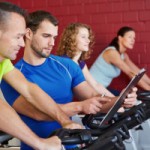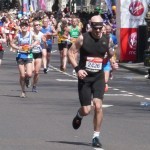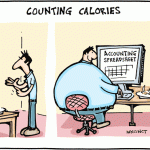Visit site:
5:2 Intermittent Fasting Week 7 | the shakeshaft


You simply cannot start “working out” too early – even if it’s just child’s play.”Three for one!” No, I am not trying to sell you three bottles of “uberpotent” test-boosters for the rat of one. Three for one that’s the SuppVersity Figure of the Week and it is the ratio of the decrease in breast cancer risk in women and the hours of physical activity per week during their adolescence. According to a 2004 review by Lagerros, Hsieh and Hsieh, each additional* hour of weekly physical activity is associated with a -3% risk of developing breast cancer later in life (Lagerros. 2004)Needless to say that the “additional” hours are in addition to the low physical activity in the laziest of the study participants, who had a 20% higher risk of developing breast cancer than their most active peers.So what else do we have today
Link:
Energy Drinks Before Workout Make You Thirsty. Single HIIT …
HIIT For Tennis | FirstRoundTennis Blog
A few months ago I wrote a post about considering adding interval training into your tennis workout. Well I put my words into actions, so I thought I’d give an update on my findings.As a refresher, High Intensity Interval Training (or HIIT) consists of mixing high intensity periods of exercise with periods of lower intensity exercise. In my earlier post, I pondered whether this type of exercise would more closely mimic the start and stop nature of tennis.For a few weeks now I’ve altered my workout routine. I’ve thrown out one of my two weekly cardio sessions and replaced it with a HIIT routine. For this new routine, I’ve been visiting a local high school track. I sprint all-out on the straightaways and then walk the curves. I then repeat this exercise until I’ve completed 4 laps around the track, consisting of 8 separate sprints. Once I’ve completed my laps, I’m done for the day.Now only doing 4 laps around a track sounds pretty simple, right? Even as I wrote that last paragraph describing my routine, I felt as if it sounded like a lazy man’s workout. But trust me, this will kick your butt the first time you do it! Let me clarify one thing first. When I say sprint, I don’t mean jogging hard. I mean trying to run as fast as I am capable of on each straightaway. By the time I get to the 5th of 8 sprints, I’m sucking wind! Sprints 6 and 7 are even more brutal, and when sprint 8 comes around, I just want to be done!I’ve only done this HIIT routine a couple of times, but I’ve already found a few things that I like about it. First, the whole routine only takes about 15-20 minutes. If I don’t have a lot of time to do cardio work, I can easily find time to fit in a routine like this. Second, I find this routine to be easier on my knees. Yes, it’s a more intense form of exercise, but I’m only on my feet for about 15 minutes total. And only a portion of those 15 minutes actually consists of high-impact sprinting, with the rest being the walking/recovery period. When I do my typical cardio routine of jogging, I’m exposing my knees to 30 or more minutes of continuous pounding. Finally, this HIIT exercise really kicks my butt! The few times I’ve done this routine, I’ve felt fine about 15 minutes afterwards. But the next day I felt the after effects. I woke up to find most of my muscles were incredibly sore, and not just in my lower body. It was as if I had gone through an intense weightlifting session!All in all, I’m pretty pleased with this HIIT routine and I intend to continue it in place of one of my cardio sessions. I believe that I’m getting equal or better results from my old workout schedule, with less overall wear and tear on my body.Along the lines of protecting your knees, the sprint/walk/sprint/walk routine I’ve been doing could also be accomplished on a bike or in a swimming pool for a lower impact form of exercise. And again, I feel compelled to give my standard disclaimer to any readers. I’m not a trainer or expert on anything regarding tennis or fitness, so please take the time to research what works best and is safest for you. HIIT is a pretty intense form of exercise so I would recommend getting into pretty good shape before even considering it.
Read this article:
Los Angeles, CA (April 26, 2013) – Intermittent fasting is all the rage, but scientific evidence showing how such regimes affect human health is not always clear cut. Now a scientific review in the British Journal of Diabetes and Vascular Disease published by SAGE, suggests that fasting diets may help those with diabetes and cardiovascular disease, alongside established weight loss claims.Intermittent fasting –fasting on a given number of consecutive or alternate days – has recently been hailed as a path to weight loss and improved cardiovascular risk. A team led by James Brown from Aston University has evaluated the various approaches to intermittent fasting in the scientific literature. They searched specifically for advantages and limitations in treating obesity and type 2 diabetes using fasting diets.The basic format of intermittent fasting is to alternate days eating ‘normally’ with days when calorie consumption is restricted. This can either be done on alternative days, or where two days each week are classed as ‘fasting days’
See more here –
Forthcoming study explores use of intermittent fasting in diabetes as …
Continue reading:
Eat Stop Eat Review – Taking a Deeper Look at Brad Pilon's Secret …


HIIT is HOT. “It’s the rage in the fitness industry right now,” says sports physiologist Mike Bracko, Ed.D., a trainer and skating coach at the Hockey Institute in Calgary, Canada.HIIT stands for High Intensity Interval Training. It involves really short bursts of activity followed by less intense intervals that are like resting on your feet without stopping.Related Link: The Real Energy-Boosting Drinks for Men The good news is that HIIT can shorten your workout, and may provide specific fitness benefits. The downside? It’s hard
Original article:


At SportsGadgets.co.uk we believe in the benefits of HIIT, and are proud to supply equipment and guidance on how to get the best out of it. Here, our blog contributor and marathon runner Andy Glass shares some if his first-hand experiences and thoughts on the subject, starting with the basics…What is “HIIT”?HIIT is an abbreviation for High Intensity Interval Training. It’s not new, back in the old days we runners used to call them “fartleks”, but I guess I can see why that name was never going to become fashionable.However, as heart rate monitor training experiences a growth in popularity (not least due to the availability of low cost and accurate heart rate monitors) there is a more interest in the benefits of training in the different “heart rate zones”, which has put a spotlight on HIIT.This is a good thing. I write as a keen and vocal advocate of HIIT.Mile 25See, once upon a time there was this girl from my running club who told me about the brilliant speed training sessions she’d been going to at the local athletics track. Sounds good, I thought. I can’t claim to have had entirely honourable intentions, but to cut a long story short we’ve been an item for 14-months, and I’ve never been a better or faster runner than I am right now. In the last year I’ve blitzed PB’s in every race distance I’ve entered. I recently knocked 12-minutes off my marathon time, missing out on the holy grail of a sub-3hr by just two minutes.HIIT has unlocked speed I never knew I had. What does HIIT involve?As the name suggests, High Intensity Interval Training involves short bursts of hard and strenuous exercise, followed by a brief period of rest to recover, and then repeat until your lungs feel like exploding.In our case this involved 2 to 4 minutes of running at speed around a track, with up to 60 seconds to recover. This would be broken into two or three sets of maybe 4-6 reps, with perhaps a longer recovery period of 5 mins in between. The torture would eventually come to an end after 50 minutes or so, accompanied by a strange sense of well-being and a deep rooted conviction that “we’ve earned that pizza now”.Who would benefit from HIIT?In short, anyone. It’s a lot to put your body through, so I wouldn’t recommend commencing a high intensity exercise program without establishing a good level of underlying fitness first. However, it is a great way to “move up to the next level”, and perfect for those that love to feel the burn…HIIT is far from the preserve of runners, it’s applicable to most forms of sport where improved endurance, strength, stamina and speed are beneficial. And who says you have to be playing sport to benefit? The improvements in fitness, muscle tone and general conditioning can be enjoyed by anyone!I know a few self-styled fitness buffs that are actually a little bit scared of proper hard work; they safely plod along in their comfort zone whilst telling themselves they are working hard. It’s common sense to me that the body will improve in proportion to the amount of stress we put upon it – put the work in, get the results out.Get ripped… look younger…I’m sorry for that cheesy subheading, however, for once I don’t think it’s a vacuous claim. I’ve never believed in shortcuts, and HIIT is not one. It’s hard work. But I believe it’s efficient and effective hard work for the results you can achieve.Through high intensity training, your body adapts to become more efficient at producing and using energy. You burn more calories during an HIIT session than you would with a gentle workout, and this continues long after you’ve finished.By forcing your muscles to work harder, you cause microscopic tears in the muscle fibre. Your body will repair this “damage” whilst you are resting and recovering, which burns calories (and fat). As this process continues your muscles will grow, your body fat reduces, and you look more toned and defined.It is this on-going cycle of rejuvenation that’s behind the “look younger” claim too. There are far too many self-propagating myths on the internet already about this topic, and apologies for adding to it, but speaking as a natural born cynic this one makes logical sense to me,The key to HIIT is getting your heart beating fast enough!High Intensity Interval Training is a perfectly descriptive name. The high-intensity bit refers to your heart rate – and you need to be pushing it up close to it’s maximum for short intervals.This is where you smart phone can help
Originally from:


You’re eating healthy, working out regularly, and you’re in a good relationship. Life is good. This means you should never feel stress again, right? Ha! If only.Unfortunately, living stress-free isn’t something most of us will experience
Taken from:
Intermittent Fasting For Women – Don't Do It Without Reading This …


HIIT It ThursdayPosted at April 24, 2013 // Fitness, HealthHere we are at day SEVEN in the Spring Tune Up Challenge! How is everyone doing? Are you getting all of your challenges done? I’ve been doing them right along with you (and been in pain right along with you!), so don’t leave me hanging here all on my own!Here I am “fluttering” on TuesdayAnd here I am post “work it out Wednesday” + an interval workout on the treadmillIf I look like I”m tired and in pain it’s because I was. Can we talk for a second about the brutality that was Inner Thigh Insanity
Source article:


I don’t count calories anymore…but I used to.I consider calorie counting to be a type of mental food training – it’s a step in the process, but it’s definitely not the end goal.Put another way, calorie counting is how you gain control, but is not control in-and-of itself. Put another way, it’s one of the biggest steps in gaining control of your eating, but it is not the final step.By focusing solely on the act of calorie counting, and not the lessons learned from it, you never really learn what “too much” feels like, or perhaps more importantly you never learn what “Just right” or “not enough” feels like.You simply spend your life eating to an amount of calories that a calculator estimated you should be eating, and you do so by adding up all the estimated calorie contents of the foods you ate, based on estimated portion sizes… Not my ideal way to let go and be less obsessive about food.Instead of tracking my daily calories I now rely on the feelings of “not enough, just right and too much”. Combined with fasting once or twice a week this has served me incredibly well over the last half-decade.It’s tricky, but learning what ‘just right’ actually feels like is far more valuable than trying to excel spreadsheet your way to weight loss by working off of estimated calorie counts on estimated weights of foods that you track…And I know that the idea of eating by ‘feel’ is probably a little to wishy-washy for some people’s obsessive compulsive need to track EVERYTHING in their lives, but basically what I’m saying (or trying to say) is that once you get the hang of it going by ‘feel’ is probably no less accurate than calorie counting –since as I said before with calorie counting you are still counting other people’s guesses aiming for a calorie total that may or may not be right for you.I will say there are some caveats to this approach.Firstly, there are some foods that are ‘hyper-palatable’ that you need to be aware of – These are foods and drinks that are really high in calories, but they don’t make you feel as ‘full’ as you should – Regular soft drinks (non-diet) would be an example, as would some pastries/sweet baked goods and many fast foods (For a good book on hyper-palatable foods check out The End of Overeating).You can still eat these foods (I had an ice-cream filled donut sandwich over the weekend) you just have to be aware that the days you do eat these food are more than likely days you went ‘over’ even if you don’t have the normal feeling you’d associated with eating ‘too much’.The other caveat is that in order to get to the point where you can eat by feel you will probably have to spend a good amount of time calorie counting – in order to train yourself to know what each feeling represents.The bottom line is that calorie counting is an important part of the process but in my eyes becoming an expert in tracking your calories on a spreadsheet shouldn’t be the end goal of stress free weight maintenance – instead it should be a training tool to get you to the point where you can eat and manage your weight, based on feel.BPPS – This is also how I choose which days I’m going to fast, and why my book Eat Stop Eat is based on one OR two fasts per week… the “OR” really depends on ‘feel’…basically your feel of how much you’ve eaten during the week.Tagged as: calorie counting, counting calories
Original source –
Why I don't count calories, but you probably should | Brad Pilon's …
- « Previous Page
- 1
- 2
- 3
- 4
- …
- 15
- Next Page »

 For now classes are 6pm and 640pm at 2840 Wildwood st in the Boise Cloggers studio.
Book your class NOW!
click this ==>
For now classes are 6pm and 640pm at 2840 Wildwood st in the Boise Cloggers studio.
Book your class NOW!
click this ==>








